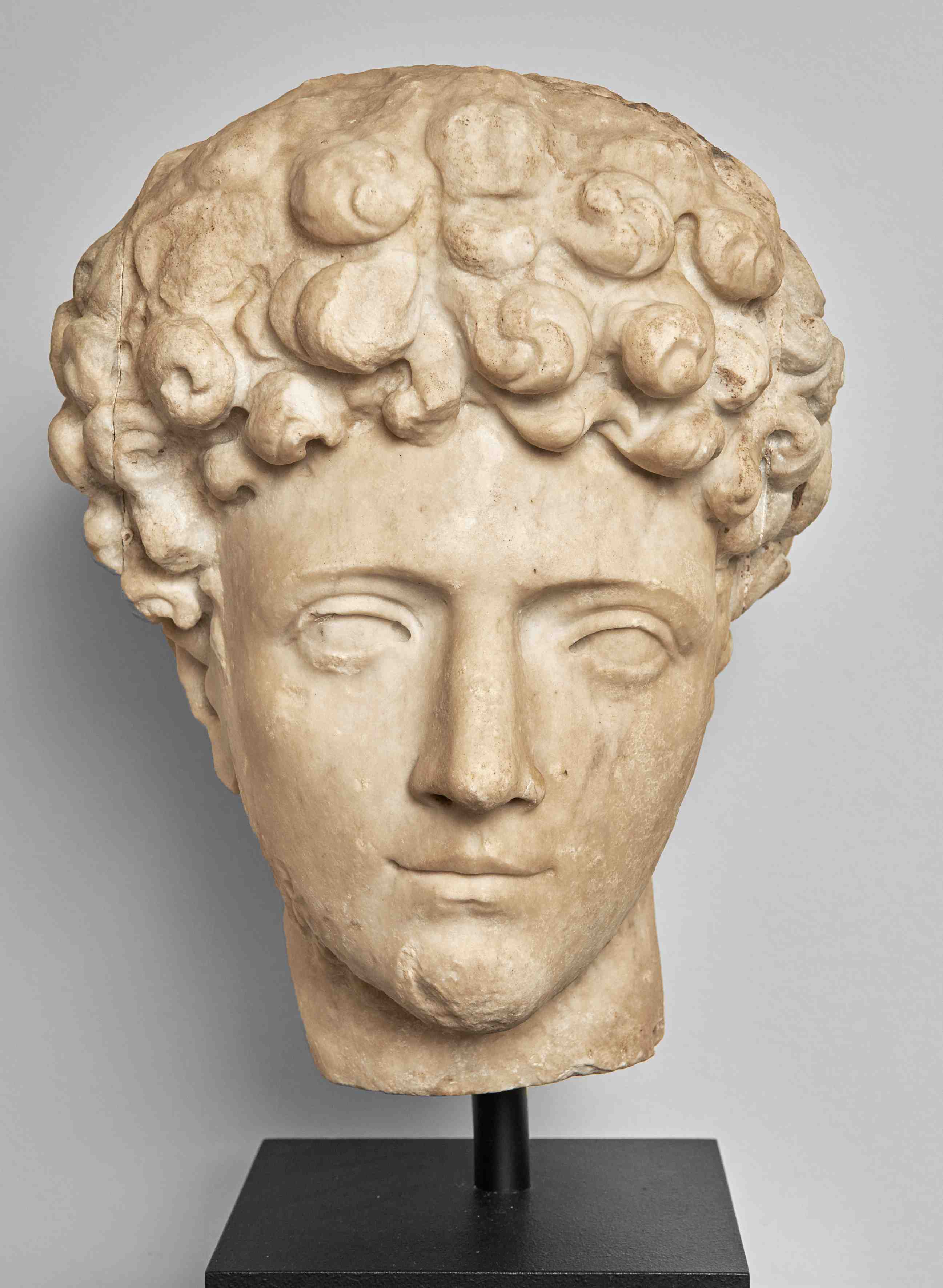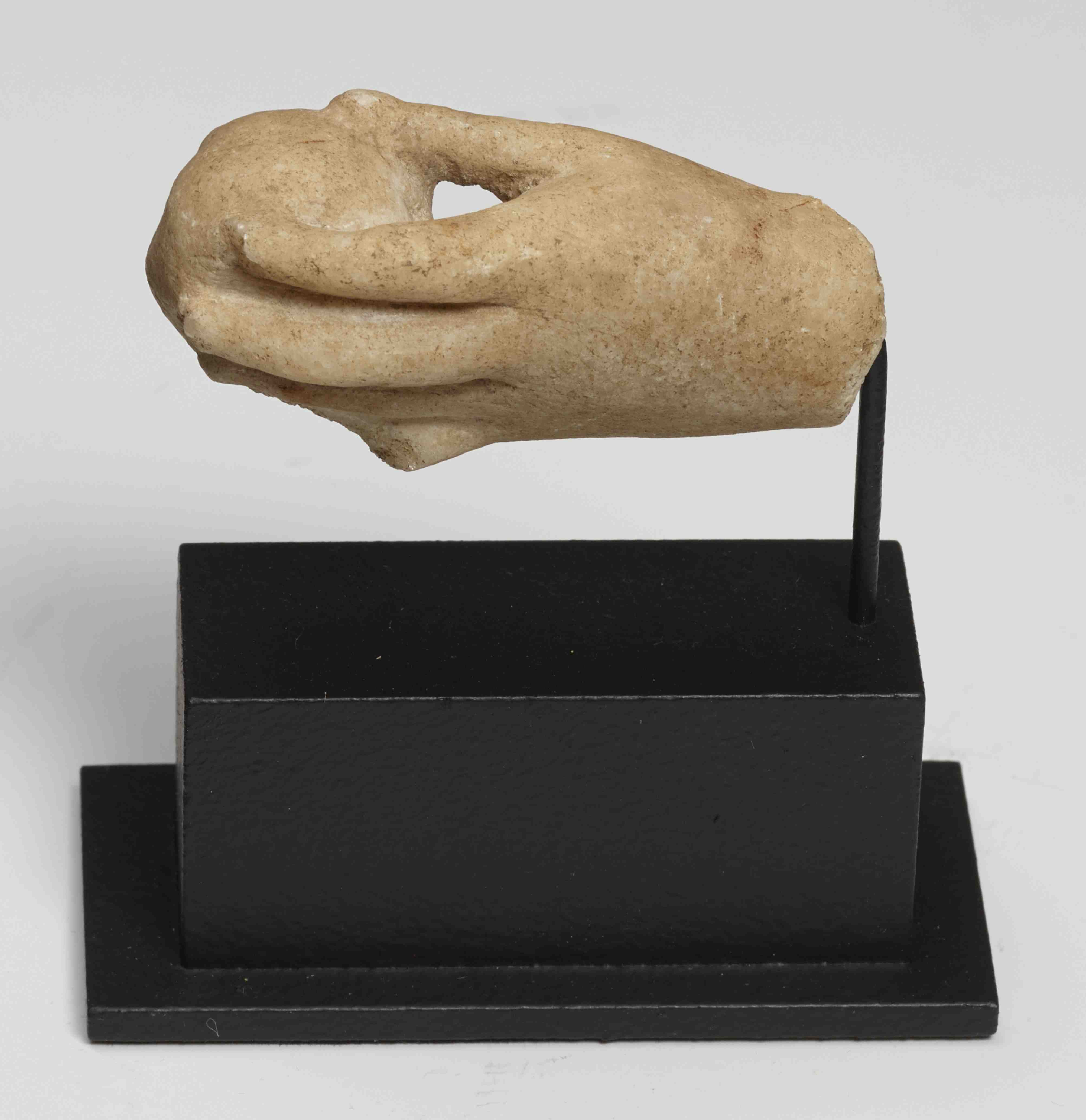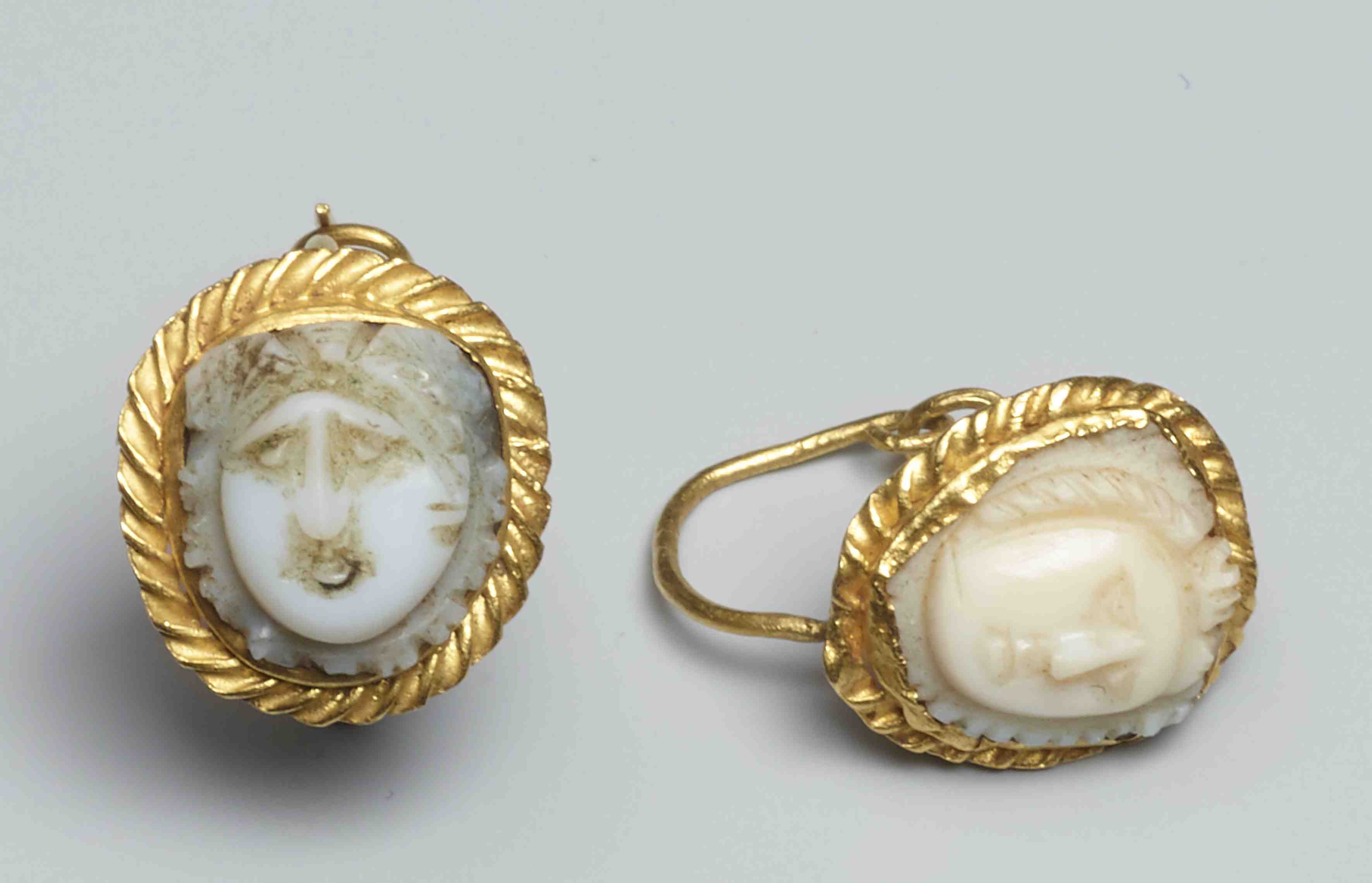An oblong slice of creamy marble with finely incised decoration. At the top, a male head is shown in three-quarters, with curly hair wafting around his troubled brow and long beard descending from his cheeks and chin. His face is dominated by arresting, deep-set eyes with prominently carved pupils, an aquiline nose and pursed lips. Beneath - rather than a bust or body – an elongated floral motif with upright blossoms and tendrils. Lightly incised diagonal lines to either side.
Note
Rather an isolated fragment, the marble was part of a mosaic in opus sectile. Rather than tessellated mosaics in which pre-cut square tesserae were arranged in rigid patterns, this technique was far more precise and luxurious with larger pieces of stone of various colours (occasionally mother of pearl or shell) were cut to order and assembled to form the figural scene. The overall shape of this marble closely resembles a greave (armour going over the shin), and although the scene into which it was inserted will never be known, it is tempting to see it as part of the panoply of a mythological warrior.
By far the finest examples of opus sectile pavements to survive from antiquity are in the collection of Palazzo Massimo alle Terme in Rome. See for example the complex mythological scene showing the ‘Abduction of Hylas’ and the remarkable frontal charioteer from the Basilica of Junius Bassus on the Esquiline. Of special interest is the head of Helios rendered in three-quarters view from a third century A.D. Mithraeum beneath the Church of Santa Prisca.








